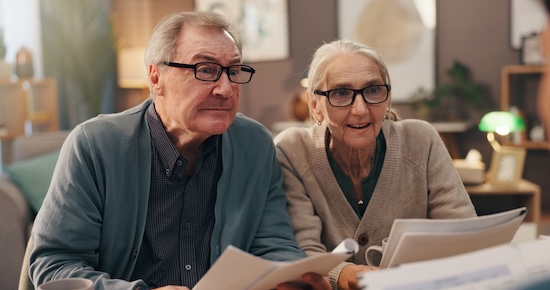
Estate Planning
Do you have a will?
Between half and two-thirds of adults don't. Do you need one? Only if you answer yes to any of the questions below:
-
Do you care who gets your property if you die?
-
Do you care who gets your money if you die?
-
Do you care who is appointed guardian of your minor children if you die?
Who Needs a Will?
Everyone does! Wills are not just for the rich. Regardless of how much or how little money you have, a will ensures that whatever personal belongings and assets you do have will go to family or beneficiaries you designate. Without a will, the court makes these decisions.
If you have children, a will is a must, to ensure that you get to choose your children's guardian. Few people plan to die in the near future, but if you die suddenly without a will, you'll be subjecting your family and loved ones to confusion and anxiety at what is already a difficult time.
There are other benefits to having a will, including tax benefits.
A will is a legal document which controls the disposition of property owned by a person on his or her death. While it is true that a will is the dominant estate planning document for most people if sensible asset protection strategies had been followed then few assets will be owned personally and the bulk of the assets will be in controlled trusts and superannuation funds.
Only assets owned personally are controlled by a will. Assets owned by superannuation funds and family trusts are not owned personally and are not controlled by a will, and have to be considered separately in any estate planning exercise.
Assets included in an estate
The assets owned and included in the estate may include:
-
real estate (except real estate co-owned with another person, usually a spouse, as joint tenants: this is discussed below;
-
personal assets such as clothes, books, furniture, and perhaps small items of professional plant and equipment;
-
securities such as shares (private companies and public companies), units in private fixed trusts, units in managed funds, property syndicates, bank deposits and similar investment type assets;
-
unpaid trust distributions;
-
interests in another person's will; and
-
businesses.
Assets that are controlled but which are not owned and which therefore do not form part of his or her estate include:
-
real estate co-owned with another person, usually a spouse, as joint tenants: this is discussed below;
-
assets owned by a family trust over which a power of appointment is held;
-
benefits in a superannuation fund;
-
benefits payable under a life insurance policy;
-
assets owned by a spouse; and
-
allocated pensions or annuities, or state pensions, that have a reversionary beneficiary (typically involving the payment of say 70% of the pension, or an equivalent lump sum, to a surviving spouse).
Co-ownership of real estate as a joint tenant, family trusts and superannuation funds all deserve special comments and explanation.
Co-ownership of real estate as a joint tenant.
There are two ways of co-owning real estate. These are tenants in common and joint tenants. Tenancy in common is usually chosen by persons who are not married and joint tenancy is usually chosen by persons who are married.
On the death of a joint tenant, the deceased joint tenant's interest in the property passes automatically to the surviving joint tenant. This is so no matter what the deceased joint tenants will says. The deceased joint tenant's interest in the property does not go to the deceased joint tenant's estate. This is because the joint tenant does not have discrete or separate "alienable" (i.e. transferable) interest in the property.
Whereas on the death of a tenant in common the deceased tenant in common's interest in the property forms part of his or her personal estate and will be dealt with in accordance with his or her will. This is because the tenant in common does have a discrete or separate alienable interest in the property.
For obvious reasons it is uncommon for anyone to own real estate as a joint tenant with anyone but a spouse (or perhaps some other close relative). This is because on the person's death the deceased's interest in the property passes automatically to the co-owner. This is fine if the co-owner is the deceased spouse or say child, but probably will not be fine otherwise.
It is possible to convert a joint tenancy to a tenancy in common, and sometimes this will be a good idea, subject to CGT and stamp duty considerations.
Assets held in family trusts
The trustee of the family trust owns these assets, not the individual. The trustee holds legal title to these assets on trust for the benefit of the beneficiaries, normally the individual and any spouse and family. Suffice it to say here that as the individual does not own the assets they do not form part of his or her estate on death.
However, as the individual will almost certainly control these assets, through his or her ability to appoint the trustee, then these assets can be and should be considered in the estate planning process. However, except for any broad and non-binding directions they are not considered in the individual's will. You cannot give what you do not own.
Most family trust deeds confer a complete and unfettered discretion on the trustee as regards both income distributions and capital distributions. A beneficiary cannot complain, at least at law, if the trustee fails to distribute either income or capital to them rather than to someone else. And normally they are not subject to any special duty of care: the trust deed will actually override the normal trustee duties and will in effect empower the trustee to put the trustee's own interests ahead of the other beneficiaries.
This means the key to controlling the assets held in a family trust is the power of appointment. The power of appointment refers to the power to terminate and appoint the trustee. The person who holds this power in effect controls the trustee, and hence the trust. This means that, subject to the trust deed, they can do what they like with the assets in the trust, including distributing income and capital to themselves and to related parties.
The original appointor is usually nominated in the schedule to the original trust deed. The trust deed will usually add that this person can nominate another person or persons to be the appointor, either separately to the original appointor or jointly with the original appointor. This nomination must be in writing.
It is quite common for a will prepared for a will maker who holds a power of appointment under a deed for a family trust to include a clause nominating the will maker's legal personal representative to become the appointor upon the will maker's death, and to direct that, as far as possible, the exercise of that power of appointment be consistent with the directions contained in the will.
But this may not always be sufficient and in many cases further documents may be needed to make sure the assets in the family trust are dealt with appropriately and in the way the will maker/appointor wishes. The form and content of these further documents will be determined by a reading of the original trust deed and any amending deeds and an analysis of the trusts' overall circumstances.
In many cases the further document will comprise an amending trust deed, i.e., a deed that operates to amend the terms of the original trust deed. This amending deed may operate by amending several specific clauses in the original trust deed, or may operate by deleting all of the original provisions of the trust deed and inserting new, more appropriate provisions in their place.
The terms of an amending deed will frequently include provisions that:
-
on the death or incapacity of the original appointor or appointers' (i.e. normally either the individual solely or the individual and his or her spouse) each of the individual's children (or other heirs) will be appointed as appointors and as trustees, (or more probably, in the case of trustees, as equal directors and shareholders of a trustee company);
-
the new appointors and trustees will have equal powers;
-
all appointor and trustee decisions must be must be unanimously;
-
unlock deadlocks between the appointors and trustees; and'
-
stipulate that all net income and capital distributions must be equal;
Serious complications can arise where expected beneficiaries have unequal bargaining power, where an expected beneficiary has a mental disability, where there has been a second marriage, particularly of there are two or more sets of children, or where the extended family unit does not get on.
Expert legal advice is needed in each of these situations.
Assets held in superannuation funds
Assets held in superannuation funds do not automatically form part of an individual's estate on death. The trustee has discretions as to who is paid the deceased death benefits, and there are tax benefits if these are paid direct to "dependants" as defined (basically a spouse or children). This means that most death benefit eligible termination payments are not paid to the deceased member's estate.
Some years ago there was a notorious case where a large public trustee refused to pay a homosexual member's death benefit to that person's same sex partner. The matter went to court and eventually the payment was made. The law has now been changed to allow members to sign death benefit notices which bind the trustee to pay the benefits in accordance with the notice. A individual may use this notice to bind the trustee to pay his or her death benefits to the estate and have them dealt with under the will. But otherwise it is up to the trustee to decide what happens.
Binding death benefit notices normally are not needed in many average "mum and dad" situations. If dad dies mum is the surviving trustee and she will simply elect to pay the death benefits to herself as one of dad's dependants, and the kids will be happy with this. But complications may arise and if they do a binding death benefit notice will then be a strongly recommended part of the estate planning process.





























